The Indian refractory industry can grow if the steel industry grows. For every ton of crude steel manufactured, around 11 kg of refractory is required. In the government’s 300 million tons of crude steel production plan by 2030, Indian refractory makers must be allowed to participate. If Chinese refractory makers take away a sizeable share, then it will pose a problem. Also, the stress should now be on developing R&D for indigenous raw materials. Working toward this end, the Indian Refractory Makers Association (IRMA) has just signed a MoU with IIT-BHU, Varanasi for developing a refractory centre of excellence, Anirbandip Dasgupta, Senior Executive Officer, IRMA

What role is IRMA playing and how can it further help the industry?
IRMA has just signed a memorandum of understanding (MoU) with IIT-BHU, Varanasi to develop an excellence centre in this city.
We will have a laboratory where we will do indigenous raw material characterisation. We will explore what sort of reserves and deposits we have, or we do not have in India, what are the possibilities etc. We will be cataloguing this. This will happen in the first phase. In the second phase, we will have to see how we can develop these.
Already, some work has been done in relation to beneficiation but on a trial basis. It could not be scaled up to a commercial level. This is definitely a shortcoming of the refractory industry.
Secondly, we will have a third party laboratory on quality control. We do not yet have such a unit which gives reliable results.
Thirdly, since the Benares Hindu University (BHU) offers a course in ceramic engineering, we could encourage some of the ceramic engineering graduates to enter the refractory industry. This would address the human resource (HR) problem .
Fourth, we, at IRMA, organise training programmes for our members, which allows for re-skilling.
You spoke of raw material characterisation. Could you take the help of any organisation regarding this?
We have not really thought about this. If needed, we can take the help of the Indian Bureau of Mines in mapping reserves or R&D. There are pitfalls in mapping as well.
この記事は Steel Insights の November 2017 版に掲載されています。
7 日間の Magzter GOLD 無料トライアルを開始して、何千もの厳選されたプレミアム ストーリー、9,000 以上の雑誌や新聞にアクセスしてください。
すでに購読者です ? サインイン
この記事は Steel Insights の November 2017 版に掲載されています。
7 日間の Magzter GOLD 無料トライアルを開始して、何千もの厳選されたプレミアム ストーリー、9,000 以上の雑誌や新聞にアクセスしてください。
すでに購読者です? サインイン

Steel's Net Zero mission
The country’s commitment to achieving Net Zero within a targeted timeframe will now propel its steel sector towards a sustainable future in line with global trends.
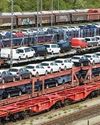
Fuel Price Hike, Supply Chain Disruption Hurt Festive Sales
Supply chain disruptions and fuel price hikes have hurt festive sales in a big way as most auto majors posted decline in sales in October.
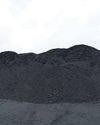
Seaborne coking coal offers remain range-bound
Seaborne coking coal offers moved in a narrow range in October amid global supply tightness and healthy spot demand.
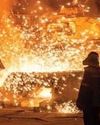
Global crude steel output down 8% in September
China manufactured 74 mt in September, fall of 21% y-o-y while India’s production went up by 7% to 10 mt.
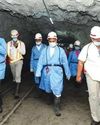
MOIL embarks on expansion projects
“Even though our country is blessed with manganese ore reserves, we import 50% of the domestic requirement. We have to lower our import dependence and save precious foreign exchange.” Ram Chandra Prasad Singh, Steel Minister

Iron ore handled by major ports down 17% in H1
The 12 major Indian ports handled 27 mt of iron-ore during H1 of 2021, down by 17% from 33 mt recorded for the corresponding period of previous year.
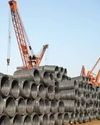
Shrinking China output to boost India exports
“In the third quarter of 2021, the company actively responded to the pressure from external policies, such as production curtailment and dual control system on energy consumption and intensity, as well as coal resource shortage and surging prices.” Baoshan Iron and Steel Co Ltd
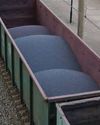
Indian Railways' iron-ore handling up 25% in H1
Indian Railways in April-September of 2021 (H1) transported 84 mt of iron ore, up by 25% over 67 mt during April-September 2020.
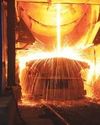
September crude steel production up 7.2% y-o-y
India’s crude steel production in September 2021 grew 7.2 percent to 9.547 million tons (mt) over September 2020 but was down by 3.2 percent from August 2021 output, provisional steel ministry data showed.

“Five enablers: way forward to sustainable cleaner steel”
Right and scalable technology, appropriate policy guidance by government, access to finance to fund transition, willingness of customers to pay for cleaner products and infrastructure for use of new technologies are the need of the hour for the sustainable and cleaner steel industry, according to Madhulika Sharma, Chief Corporate Sustainability, Tata Steel.